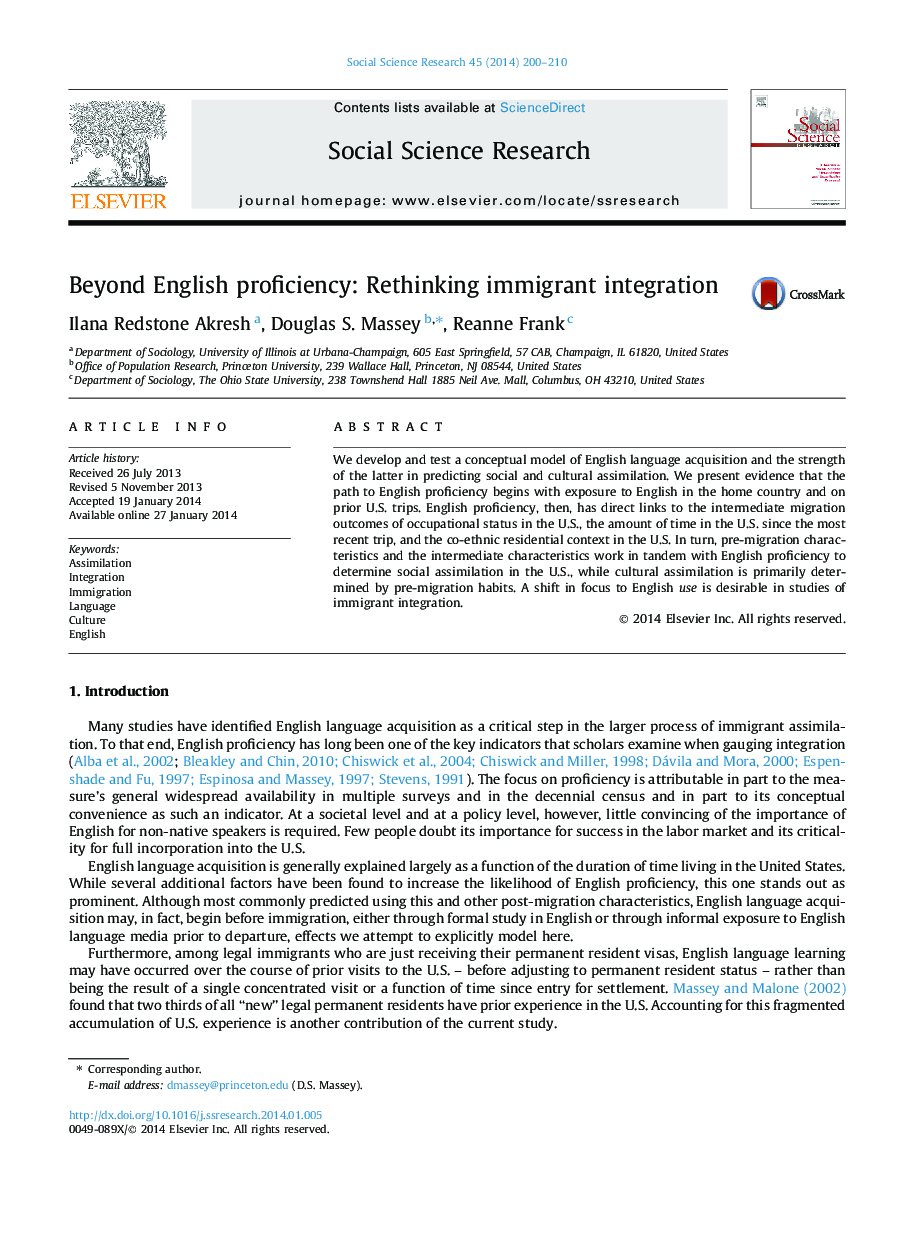| Article ID | Journal | Published Year | Pages | File Type |
|---|---|---|---|---|
| 955793 | Social Science Research | 2014 | 11 Pages |
•Language assimilation begins at home, in the origin country prior to departure.•Language assimilation continues over time in the U.S.•Not controlling for pre-migration characteristics yields overestimated effects of time since arrival.•English ability is a necessary but not sufficient condition for assimilation.
We develop and test a conceptual model of English language acquisition and the strength of the latter in predicting social and cultural assimilation. We present evidence that the path to English proficiency begins with exposure to English in the home country and on prior U.S. trips. English proficiency, then, has direct links to the intermediate migration outcomes of occupational status in the U.S., the amount of time in the U.S. since the most recent trip, and the co-ethnic residential context in the U.S. In turn, pre-migration characteristics and the intermediate characteristics work in tandem with English proficiency to determine social assimilation in the U.S., while cultural assimilation is primarily determined by pre-migration habits. A shift in focus to English use is desirable in studies of immigrant integration.
